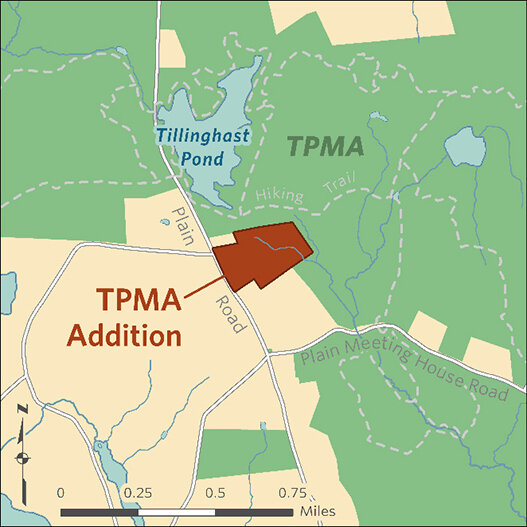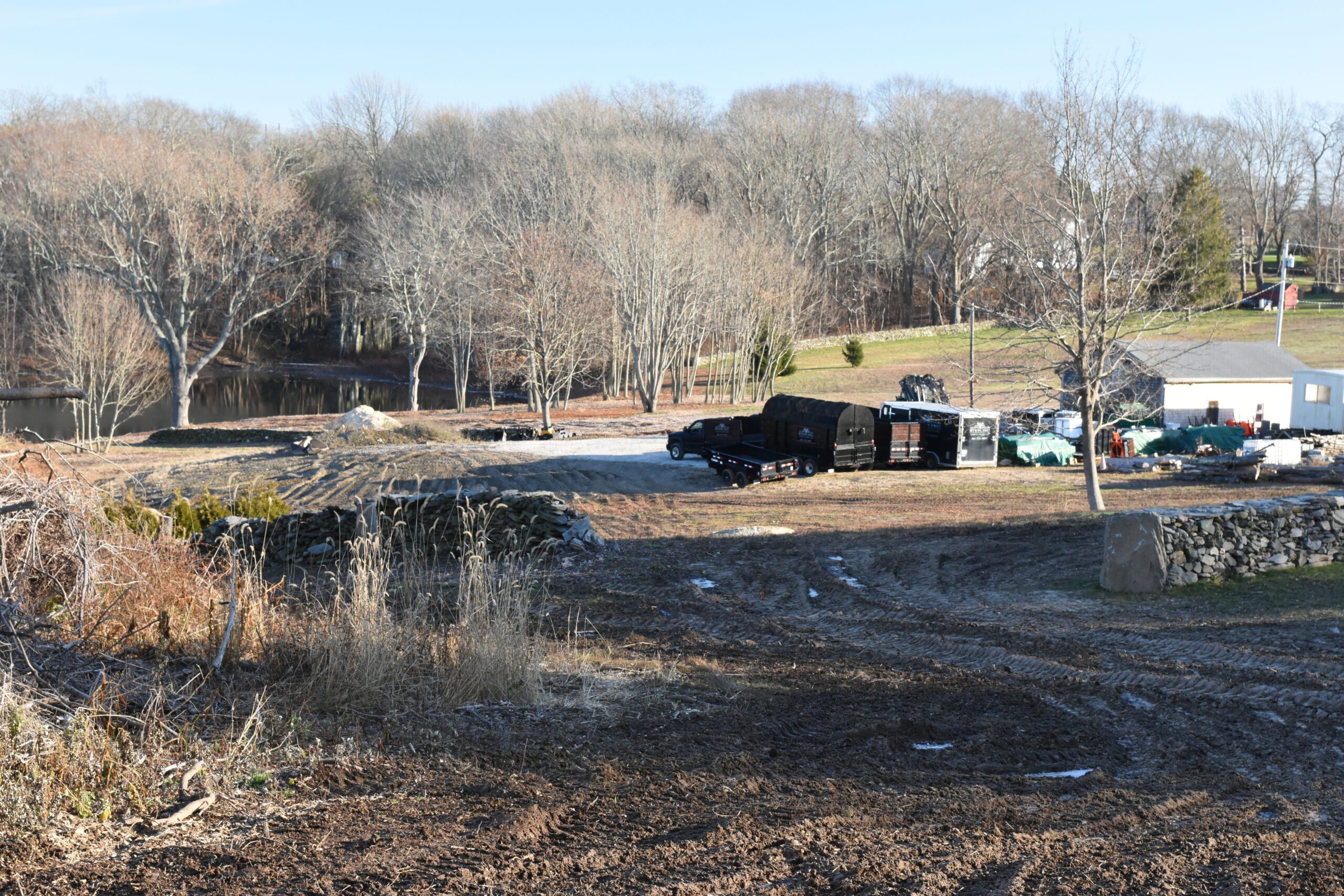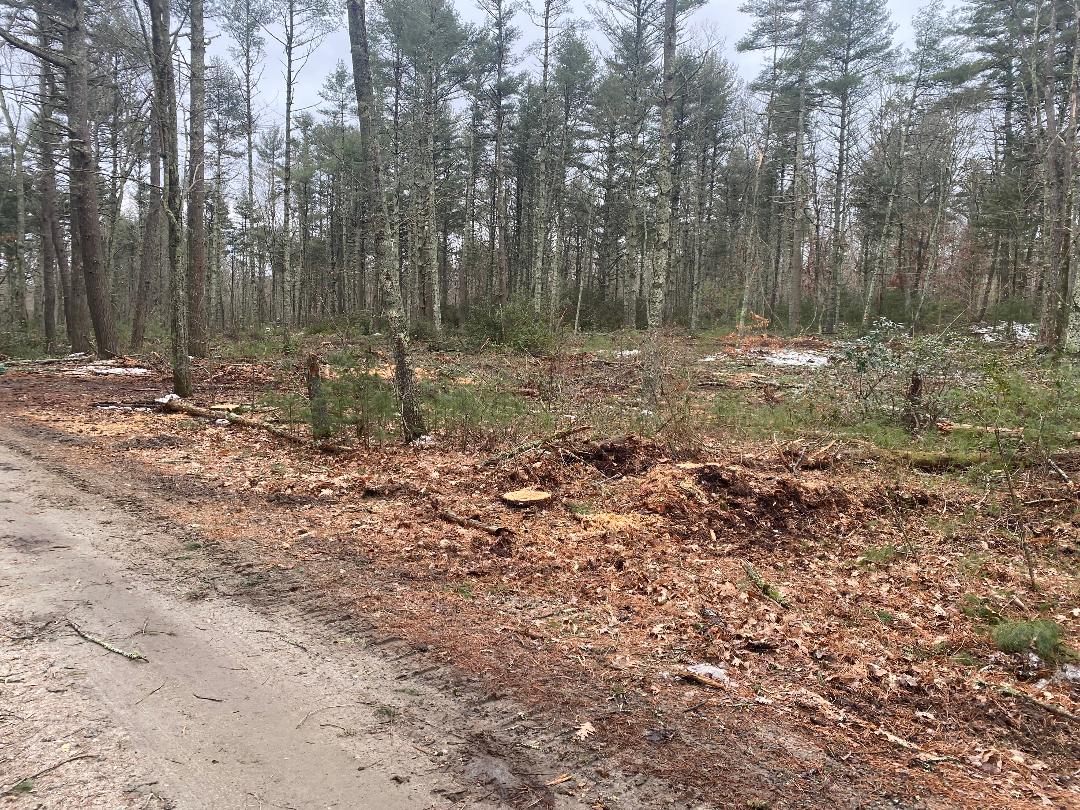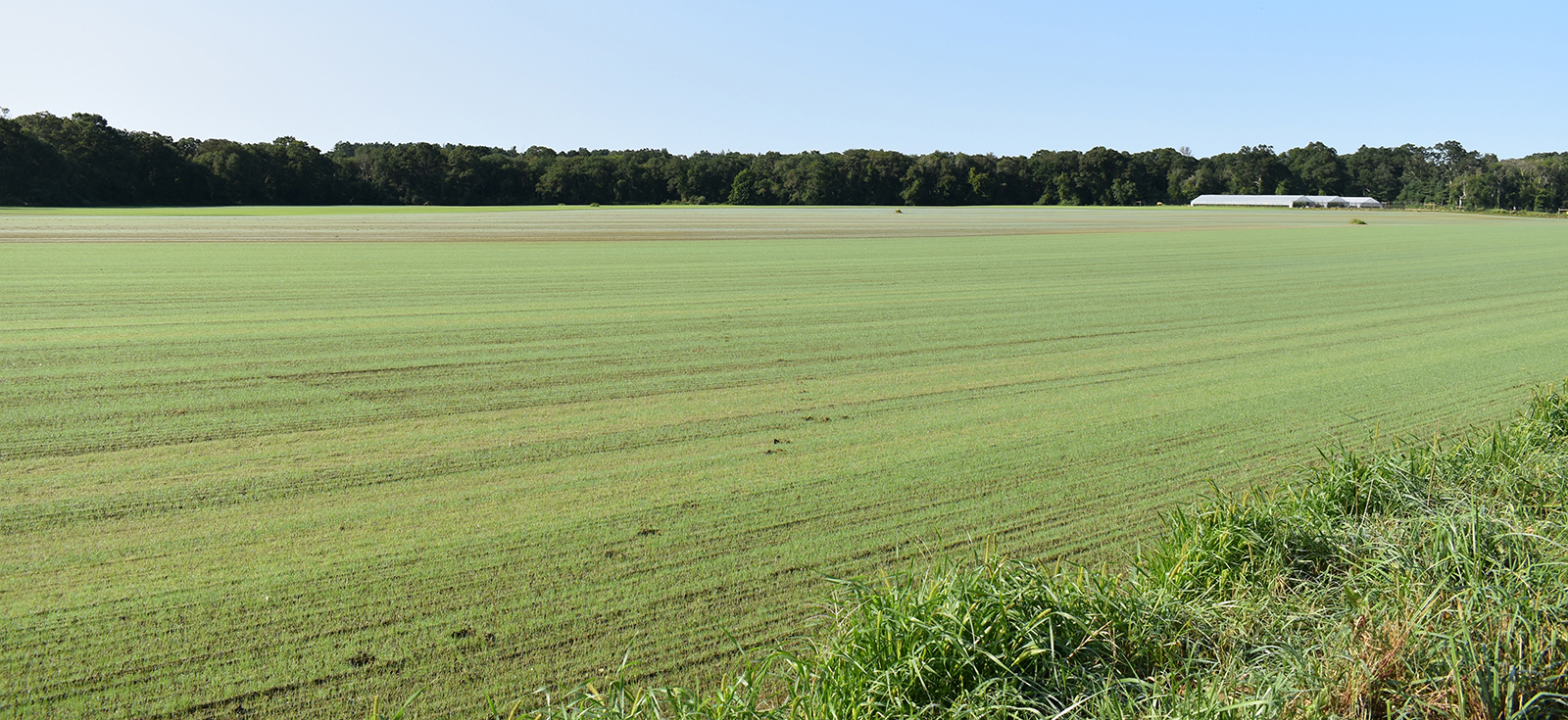DEM, TNC Protect 28 More Acres Around Tillinghast Pond
January 31, 2020

WEST GREENWICH, R.I. — The Rhode Island Department of Environmental Management (DEM) and The Nature Conservancy (TNC) have permanently protected 28 acres of forested land for public recreational use.
The parcel abuts 2,370 acres of protected land in the Tillinghast Pond Management Area, TNC’s largest nature preserve in Rhode Island, and the Wickaboxet Wildlife Management Area. It’s also near several other significant tracts of protected land, including the Nicholas Farm Management Area, Arcadia Management Area, and the University of Rhode Island’s W. Alton Jones Campus.
“I am delighted that we’ve been able to protect this priority habitat at Tillinghast Pond and enhance recreational opportunities for the public,” DEM director Janet Coit said. “Preserving Rhode Island’s natural assets enhances our quality of life and helps support sustainable communities. Tillinghast is one of the best spots for hiking, bird-watching, hunting, and just being outdoors enjoying nature.”
DEM noted that losing this tract to development would have meant the construction of two new homes within 800 feet of the Tillinghast Pond Management Area’s main trailhead. The recent effort also conserved the last unprotected tributary stream to Phillips Brook, which originates east of Tillinghast Pond and flows south toward the Wood River.
The property will be incorporated into the Tillinghast Pond Management Area. Tillinghast Pond offers a 13-mile trail system. The preserve also is actively managed to improve wildlife habitat. Under a 10-year forest stewardship plan, TNC hires Rhode Island loggers to create pockets of shrub and grassland habitat by removing areas of forest that have succumbed to invasive pests such as gypsy moth caterpillars. These projects increase habitat diversity and are already benefitting hawks, bluebirds, and woodcocks.
TNC bought the property for $265,000. In exchange for a conservation easement over the property, DEM contributed $206,000 toward the purchase price, including $154,500 from the U.S. Fish & Wildlife Service Wildlife Restoration Program and $51,500 from state open space bonds. The balance of funding was provided by the West Greenwich Land Trust and TNC.
Categories
Join the Discussion
View CommentsYour support keeps our reporters on the environmental beat.
Reader support is at the core of our nonprofit news model. Together, we can keep the environment in the headlines.
We use cookies to improve your experience and deliver personalized content. View Cookie Settings



